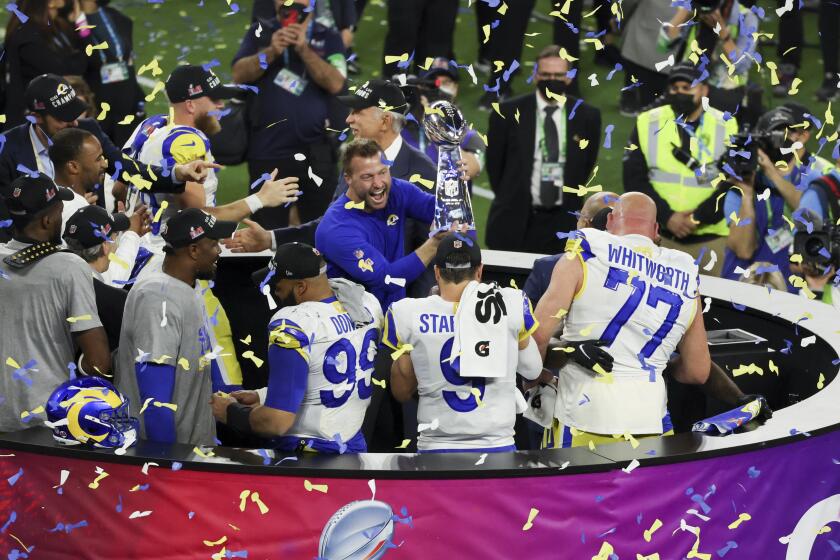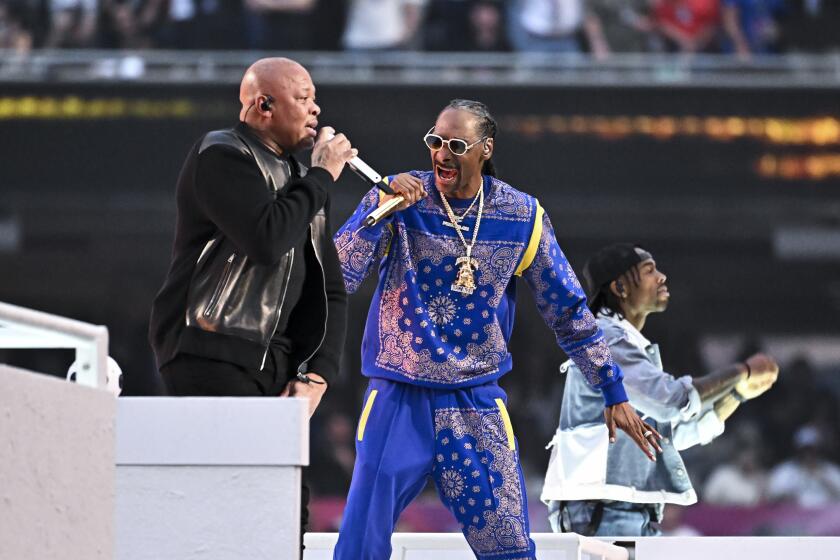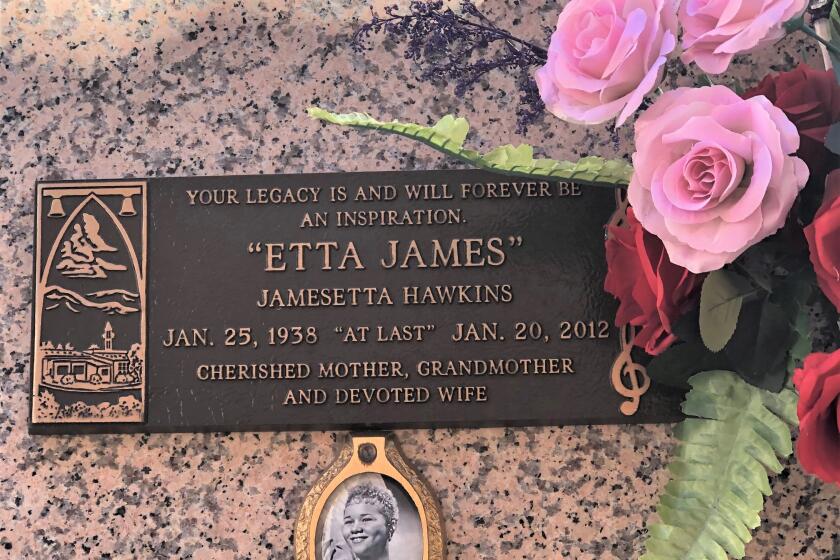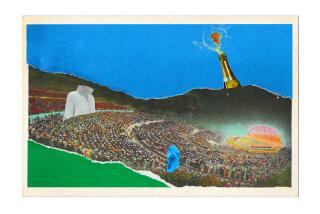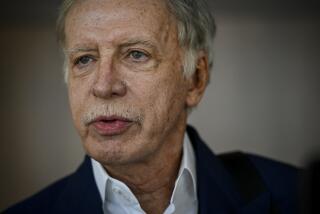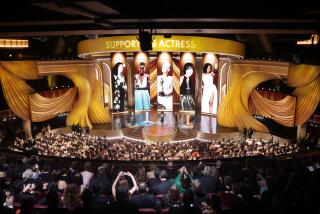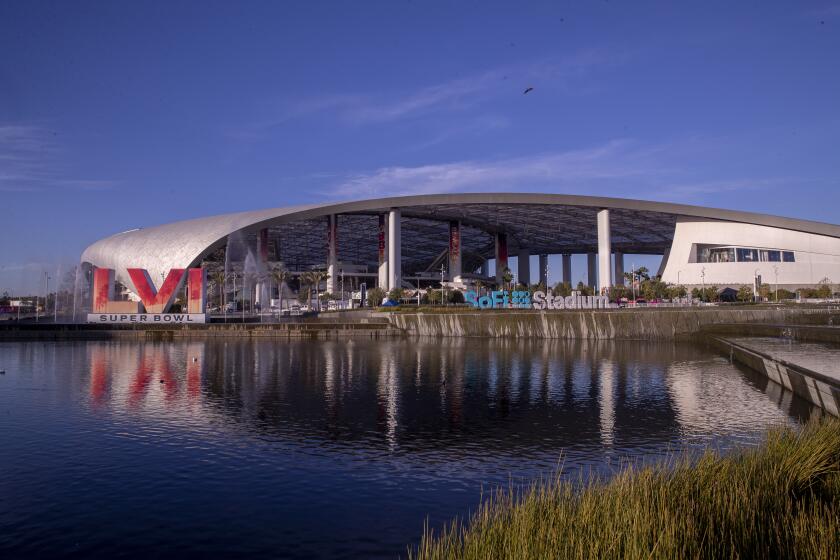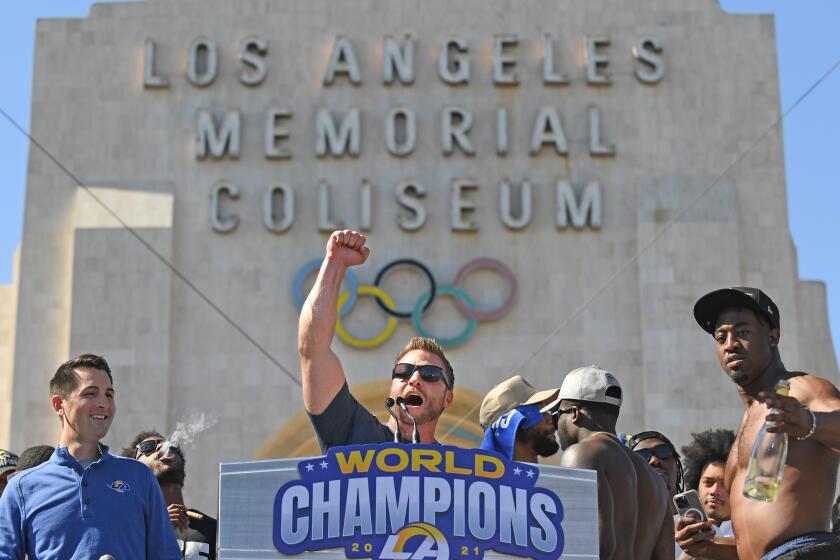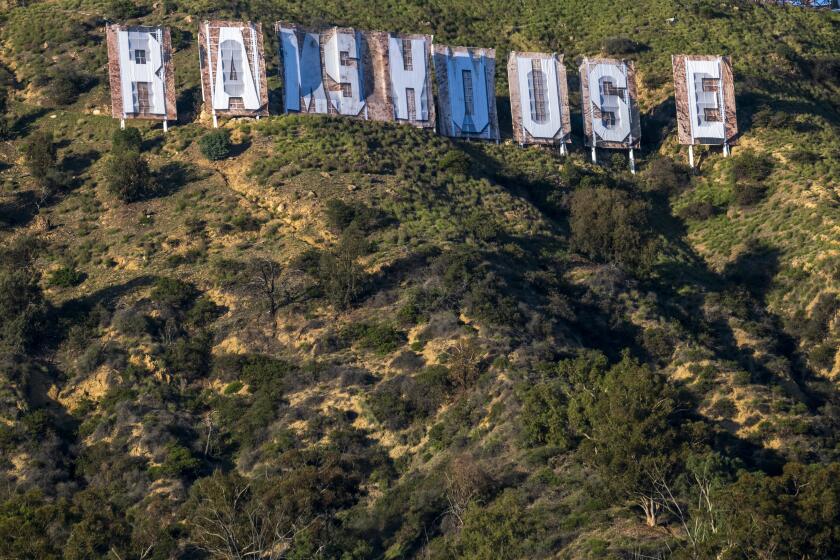Column: What’s the difference between the Oscars and the Super Bowl? (Hint, one doesn’t require Spanx.)
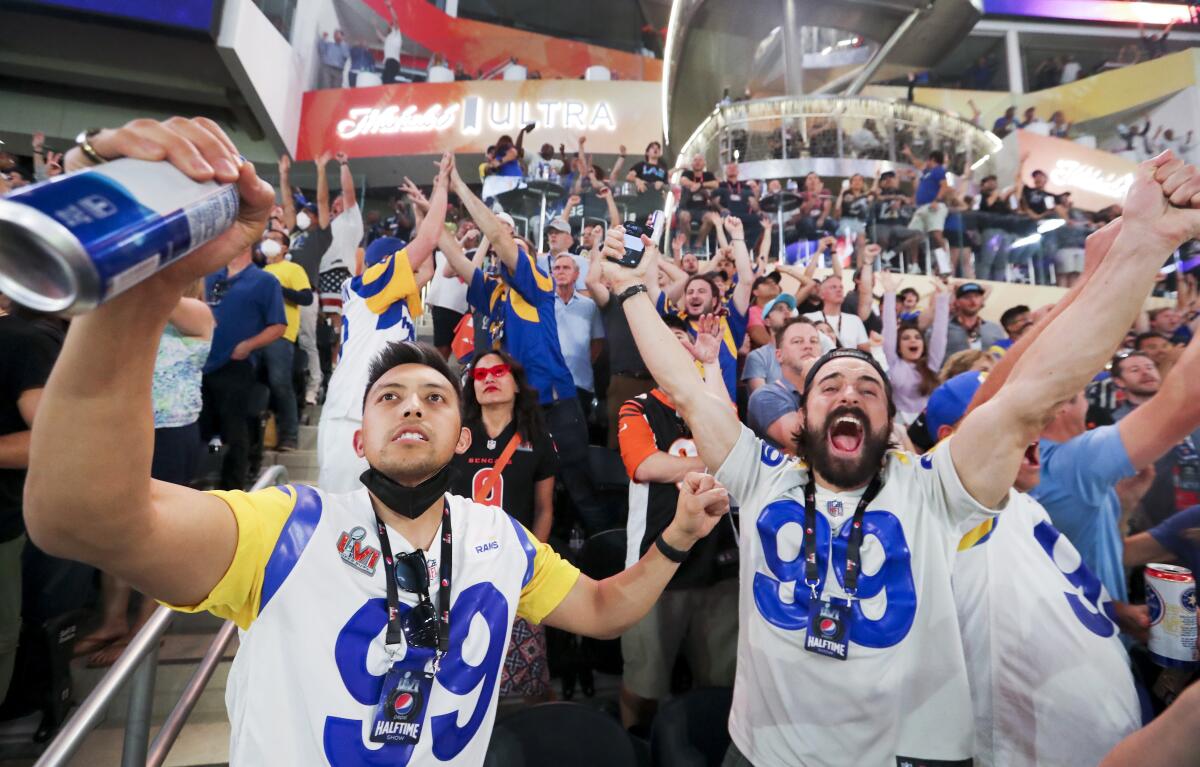
- Share via
Having covered countless Academy Awards, including the first one, in 2002, to be held at the then-brand-new Kodak (now Dolby) theater, I have finally covered a Super Bowl, the first one held in Los Angeles in more than 30 years, at the brand-new SoFi Stadium in Inglewood.
The assignment put me in a state of high anxiety. I write about a lot of things, but sports is not generally one of them; in the past, my contribution to The Times’ Super Bowl coverage was confined to “reviewing” the commercials. (This made my husband and me a nightmare duo at Super Bowl parties; he would get mad if anyone talked during the game, and I would freak out if anyone talked through the commercials.) I never want to look stupid in front of Times colleagues Sam Farmer or Bill Plaschke, so I tend to give football, and most sports, a very wide berth.
But who in their right mind would turn down the chance to go to Super Bowl LVI live? Especially after last year’s Oscars, which occurred press-free at Union Station?
Turns out, the two events have way more in common than you might think. Both are complete traffic nightmares; both involve one group of people ending the night elated and drunk while another leaves despondent and drunk; both keep the big stars confined to special seating where the hoi polloi cannot even see them. And whether you are at the Oscars or the Super Bowl, if you are sitting in the cheap seats, you are basically watching television.
Each is considered the hottest ticket in town. Though unlike the Oscars — where no tickets are available to the public except, in non-COVID years, seating in the red carpet bleachers at the theater — anyone can buy a ticket to the Super Bowl. Well, anyone who is able and willing to pay between $6,000 and $32,000. Which, apparently, many people were — more than 70,000 were there Sunday.
Check out the best images from Los Angeles Times photographers covering the Rams vs. Bengals in Super Bowl LVI on Sunday at SoFi Stadium.
Far fewer people attend the Oscars, but they are on average way more famous and often in very big gowns. Nevertheless, both events involve moving large groups of ticket-haves through even larger groups of ticket-have-nots.
Ancillary crowds at the Oscars tend to be folks hoping to catch glimpses of their favorite stars and a smattering of protesters. The nonattending crowd outside SoFi may have included people hoping to spy a recognizable silhouette through the tinted windows of a passing SUV, but most were more interested in screaming things about vaccination and mask mandates.
And though both season-ending contests take place in winter, this year’s Super Bowl attendees may have found that they, like many a red carpet-trapped Oscar publicist, should have brought sunscreen. Especially if they spent much time tailgating.
Unless you consider Rams horns or a suit made of orange tiger head-patterned fabric high fashion, people tend to be better dressed at the Academy Awards, but also way more uncomfortable. Indeed, when I was struggling to control my pre-Super Bowl traffic anxiety, I continually reminded myself that as bad as it might be, at least I would not be coping with it in heels. Or Spanx.
That may be the biggest difference between the two events — only one of them requires Spanx.
Also, there is a lot more food at the Super Bowl, and no opening monologue. There is plenty of talking, from the commentators, but only one (big and splendid) musical number.
Dre was joined by Snoop Dogg, Kendrick Lamar, Mary J. Blige, Eminem and guest 50 Cent in one of the great halftime shows of all time.
Perhaps the Oscars should consider folding all the musical nominees into a halftime show.
The Oscars like to claim they are the second-most watched televised event after the Super Bowl, never mind the gap — the latter regularly scores twice as many viewers at the very least. Or, it used to.
The statement remains technically true, but the discrepancy has become absurd. Last year, viewership for both shows hit new lows, but with its 96.4 million to the Oscar’s abysmal 9.85 million, the Super Bowl is now really the only big annual televised extravaganza left standing.
To be fair, the pandemic left last year’s Oscars ceremony a shadow of its former self; it’s tough to drum up a ton of interest in movies when all the movie theaters are closed.
Still, considering that combined viewership for both 2021 events just about added up to the Super Bowl’s ratings high point, in 2015, it’s a good thing both are occurring in L.A. this year. Good for local businesses and good for burnishing the city’s image. (And if we’re being honest, that image is one of its largest local businesses.)
Also good for the city itself. SoFi stadium is a terrific venue — airy, colorful, beautifully landscaped, with amazing views — but the biggest difference between the Oscars and the Super Bowl (besides the obvious) was the people. Before the game began, the concourses were full of attendees hugging and high-fiving. Rams and Bengals fans shouting their delight. At being at the Super Bowl, yes, but the thrill ran even deeper than that. People were seeing friends and family they hadn’t seen in months, possibly years. I felt the same when I saw some of my colleagues for the first time since March 2020.
After more than a year, my husband and I have a movie date (“Together Together”) and it was very weird and extremely wonderful.
Sure, there was concern — COVID-19 is still real and 70,000 is a lot of people to have in one place, even a place that is more outdoors than in. For many, this was the first big event in almost two years, and it doesn’t get much bigger than the Super Bowl.
The joy was palpable, and it remained so even as the game teetered toward one victor and then the other. For sure, the Bengals fans were louder and, it seemed, more numerous, but as the evening wore on and the best picture announcement — I mean the two-minute warning — drew closer, L.A. fans made themselves known.
We won, and that was great, but the Bengals fans I saw remained surprisingly buoyant in the face of defeat. Maybe it was the pleasure of ditching chilly Cincinnati for a few days; maybe it was the thrill of being around people again.
Or maybe they understood, as so many Oscar attendees have, that it’s an honor just to be nominated.
Also that at both events, winners and losers face the same immediate destiny: At least an hour in terrible traffic.
SoFi’s nearest neighbor is the 115-year old Inglewood Park Cemetery, where Ella Fitzgerald, Ray Charles, Etta James and Betty Grable set a very high-wattage standard.
More to Read
The biggest entertainment stories
Get our big stories about Hollywood, film, television, music, arts, culture and more right in your inbox as soon as they publish.
You may occasionally receive promotional content from the Los Angeles Times.
